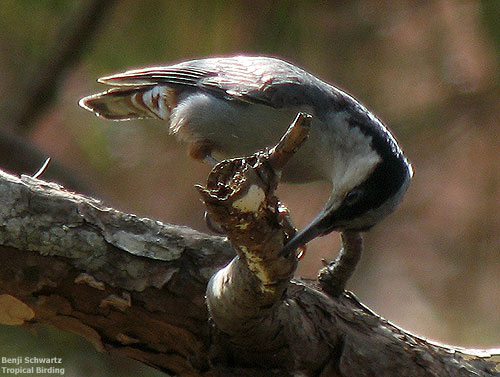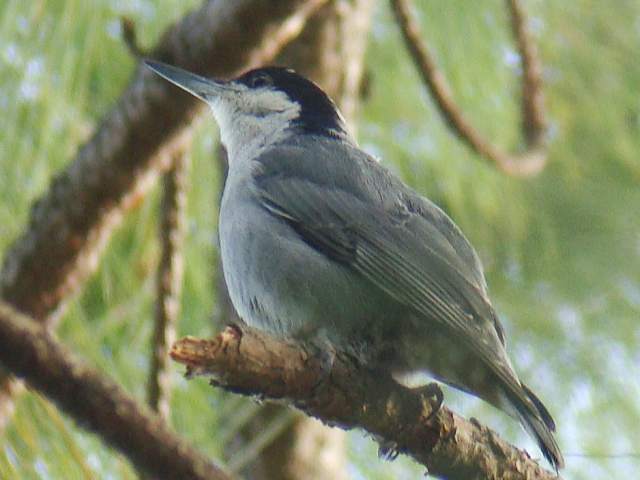
Sitta magna
SUBFAMILY
Sittinae
TAXONOMY
Sitta magna Ramsay, 1876.
OTHER COMMON NAMES
French: Sitelle gйante; German: Riesenkleiber; Spanish: Sita
Gigante.
PHYSICAL CHARACTERISTICS
8 in (20 cm), with a short tail. The back is colored blue-gray,
the crown blue-gray, undersides light gray with chestnut beneath
tail, throat white, and with a black line through the eye.
DISTRIBUTION
Occurs in southwestern China, east-central Myanmar, and
northwestern China.
HABITAT
Occurs in open montane forest with pines present or dominant,
at altitudes of 3,900–8,200 ft (1,200–2,500 m) or higher.
BEHAVIOR
Occurs as pairs that defend a breeding territory. Does not migrate.
Occurs in mixed-species flocks with tits (or chickadees)
and other nuthatch species in the nonbreeding season. The
song is a series of loud trisyllabic calls.
FEEDING ECOLOGY AND DIET
Gleans invertebrates from tree bark and foliage and also eats
fruits and seeds in winter.
REPRODUCTIVE BIOLOGY
Pairs nest in a tree cavity. The female incubates the eggs but
both sexes feed the young.
CONSERVATION STATUS
A rare species that is listed as Vulnerable. This species is much
reduced in abundance and range. It has been greatly affected
by habitat loss caused by agricultural disturbance and conversion
and by fuelwood harvesting. Its remaining critical habitats
must be protected.
SIGNIFICANCE TO HUMANS
None known.
Other popular Animals
Photo Gallery of - Giant nuthatch




 Animalia Life
Animalia Life